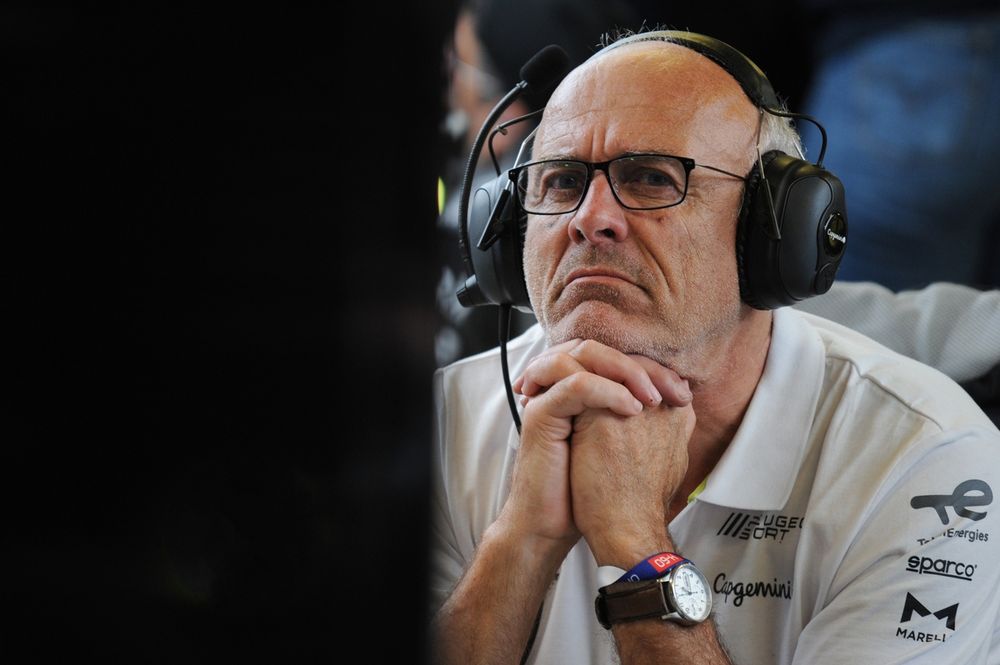Peugeot has admitted for the first time that building an all-new car is one of the options for its ongoing World Endurance Championship programme.
Olivier Jansonnie, Peugeot Sport’s technical director, has revealed that replacing the current 9X8 2024 Le Mans Hypercar will be the only way forward if there are no changes to the system of Balance of Performance for the blue riband Le Mans 24 Hours round of the WEC.
“It doesn’t make any sense for Peugeot to compete in the WEC without being in a position to win at Le Mans — we have to find a solution for this,” said Jansonnie.
“There are two options, either they [the rule makers, the Automobile Club de l’Ouest and the FIA] change the way they balance the cars at Le Mans or we come with a new car, one of the two.”
Peugeot’s position was reiterated by Jean-Marc Finot, motorsport boss of the Stellantis group of which Peugeot is a part.
He stated that Peugeot “needs the tool to be competitive”.
The admission from Peugeot comes against the backdrop of a long-term pledge to continue in the championship made last month and a disappointing performance at Le Mans in which the current car was off the pace and registered a best finish of 11th after the disqualification of the #50 Ferrari.
#93 Peugeot Totalenergies Peugeot 9×8: Paul Di Resta, Mikkel Jensen, Jean-Eric Vergne
Photo by: Nikolaz Godet
It had emerged before Le Mans that the French manufacturer is in negotiation with the governing bodies of the WEC about building a new car for 2027.
The LMH regulations allow for a manufacturer to build a second car during the lifecycle of the rule book, but Jansonnie revealed that the 9X8 2024 introduced early last year counted as an all-new homologation rather than an evolution involving the use of evo joker performance upgrades.
“When you look at our previous, first-generation car and compare the difference, it is obvious we have used that already,” he said.
Peugeot had previously intimated that development of the second-generation 9X8 was undertaken under the evo joker rules rather than being a new homologation.
It made a play of not changing the crash structure of the car to avoid having to re-homologate the monocoque.
The 2024 car represented a major change in concept: it abandoned the equal size wheels and tyres front and rear mandated in the original LMH rules and incorporated a conventional rear wing for the first time.
The help the 9X8 2024 received under the BoP over the second half of last year allowed it to move towards the front of the Hypercar class pack and score a podium at the Bahrain finale in November.

Jean-Marc Finot, Peugeot
Photo by: Rainier Ehrhardt
It was also proved competitive at this year’s pre-Le Mans WEC round at Spa in May and would have been in contention for another podium but for a communication problem that resulted in its best-placed car failing to pit during a caution period.
The 9X8 was down on the minimum weight Hypercar car weight and up at the maximum power of 520kW (697bhp) from April’s Imola WEC round this year.
But for Le Mans the car was given a 1039kg minimum weight and maximum power of 507kW (679bhp).
The BoP for regular WEC rounds is calculated using an algorithm based on race performance data, while for Le Mans the ACO and the FIA use simulation resulting from the specificities of the 8.47-mile Circuit de la Sarthe.
The life of the Hypercar category has been extended until the end of 2032, it was announced last week.
How that will affect the number of evo joker upgrades allowed to a manufacturer over the life of an LMH or an LMDh, which presently stands at seven, and the ability to build a new car has yet to be finalised.
ACO president Pierre Fillon said last week that what he called “practicalities” of the rules extension have yet to be worked out and that the target is to compete that process by the end of the year.
In this article
Gary Watkins
WEC
Le Mans
Peugeot Sport
Be the first to know and subscribe for real-time news email updates on these topics
Subscribe to news alerts
Read the full article here

